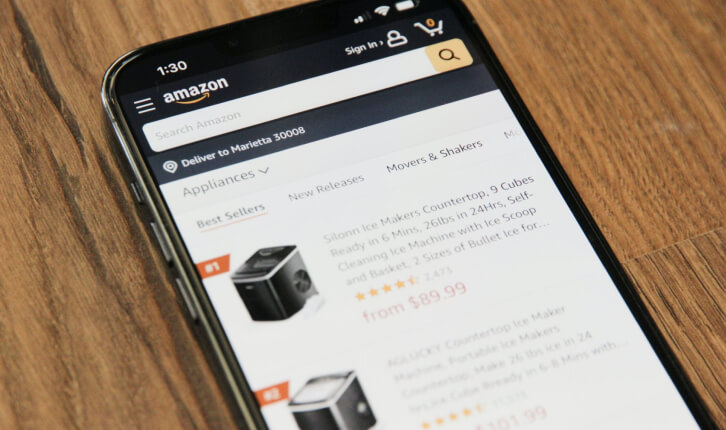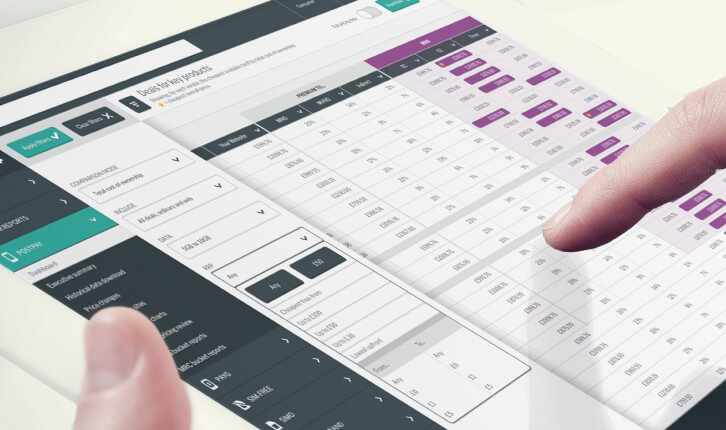Published on: July 1, 2022 | Last updated on: July 22, 2024 |
If you run a business, you will have competitors.
And just like you, your competitors are working hard to make their business the best.
Some things will work for them, and some things won’t. They may have already solved problems that you’re currently facing, or maybe they’re gearing up for a big product launch.
But if you’re not keeping a close eye on them, how would you know all this?
In this article, we break down why it’s important to monitor competitors, including how one of our partners solved a crucial problem by monitoring their competition.

By closely paying attention to what your competitor is doing, you’ll be able to better predict their next moves. Each action your competitor takes is part of a wider strategy, and current plans often follow past successes. Using tools such as Magpie’s Price Tracker, you can analyse pricing trends and past campaigns, which means you’ll start to get a feel for what’s coming next.
By monitoring your competitor and predicting their next moves, you can be proactive, rather than just reactive.
By monitoring your competitor and learning what’s working for them, you could discover an untapped opportunity that you hadn’t previously considered. After all, imitation is the sincerest form of flattery. You can then leverage your competitor’s knowledge to explore potential new marketing avenues. For instance, you could learn a lot by tracking competitor promotions. You’ll learn what sort of promotion they’re offering, how long they are running it for, how prominent it is, and who they’re working with on it. You can then use this insight to fuel future activity.
Staying on top of your competitor’s pricing strategy is hugely important. If you know how they’re pricing their products, you can stay competitive in the areas that matter most to you.
This is where pricing alerts can pay off. The sooner you know, the quicker you can react, and the less market share you’ll lose. That’s why with Magpie DBX you’ll receive daily email alerts, where we’ll sort through all of the daily data and highlight the pricing changes that have the greatest impact on your business.
You don’t want to be surprised by any sudden changes in the market. New challengers will be cropping up, there will be mergers and acquisitions, and there will be shifts in trends. Consumers change their behaviour gradually, but your competitors may have already cottoned on and started to change their tactics. Watch what they’re up to and gain a better understanding across the whole marketplace.
It’s easier to strengthen your own position in the market if you understand how the rest of the market is made up. By tracking your competitor’s movements, you can capitalise on their areas of weakness. This is where being proactive, rather than reactive, comes into play again.
Once you have a full view of all your key competitors, it’s easier to spot your own shortcomings. It’s a tough pill to swallow, but chances are there are ways that your business can improve. Pay close attention to what your biggest rivals are up to, and you’ll soon discover what you could be doing to make your own operation better.
The beauty of competitor monitoring is that it can benefit businesses of any size. From small startups to multinational enterprises, there’s always something to learn from your closest rivals. One of our clients, a global phone manufacturer, used Magpie DBX to do just that.
The brand (we can’t mention their names for legal reasons) noticed a huge dip in sales during a particular window of time. They hadn’t done anything that could have caused this themselves, so they were left dumbfounded as to why.
They knew what had happened, but they didn’t know why.
We sat down with them and loaded up our pricing and prominence tools.
Within five minutes, we showed them how their prominence and pricing had been hijacked by another brand during the same period. It wasn’t anything they had done; it was all due to the actions of another business.
Our client learnt an important lesson that day. With their newfound insights, they started work on a reactive campaign to regain market share. They also set up numerous pricing alerts to keep a constant eye on the competition.
It just goes to show that even the biggest of businesses can be left scratching their heads, but by using a tool like Magpie DBX, everything can be so much clearer.
Interested in learning how Magpie DBX can monitor competitors for you? We’d love to show you how it works. Get in touch today.

Pricing your products competitively while securing a healthy profit margin is the ambition of every business. With customers now more tech-savvy and commercially aware than ever, competitor price monitoring is essential.
But how exactly do you stay ahead of your competition and keep prices consistent?
In this article, we’ll show you 10 ways to beat competitors without changing your prices, and explain what Magpie DBX can do to help your company maintain its pricing position.

If you’re a manufacturer and you’re not monitoring prices, you’re missing a trick.
In fact, a trick might be an understatement. In 2022, data is gold, and pricing data is gold dust.
If you’re not keeping on top of your own prices, then who is?
In this article, we’ll take you through everything you need to know about price monitoring, including what it is and how it can help manufacturers like yourself. We’ll even include a living, breathing example of how our own monitoring tool has helped revolutionise a global brand’s pricing strategy.
Let’s get started.

Shoppers love looking at things, and if you want your business to succeed, you’d better make sure your products are as appealing across the digital shelf – where they’re housed online – as they are within a physical retail space.
Want to learn more about how Magpie DBX can help your business? Get in touch with us and let us show you!



